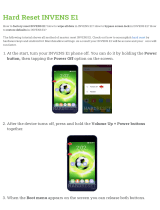
4
Safety Precautions
Before start working with the Device, please, read this section carefully. Follow-
ing these instructions will help you ensure your safety and extend service life of
the Device.
Storage, Carriage and Usage Conditions
Device operating temperature range is 0°C to +40°C, so don’t expose the Device
to excessively high or low temperatures. Never leave cables near heat sources.
Heated cables or their insulation may become deformed or damaged, which
could lead to fire or electric shock.
Try to avoid next impacts:
•direct sunlight
•direct flame or smoke (cigarette, lighter, open fire etc.)
•exposure to liquids or damp (do not use the Device in the rain, in the street
at higher humidity, near bodies of water etc.)
•penetration of liquids or moisture
•exposure to strong electromagnetic fields, electrostatic charges and artificial
sources of UV electromagnetic radiation
•excessive mechanical pressure on the screen, connectors and keys of the
Device.
Do not leave the Device for a long time in poorly ventilated environment, e.g.
in a car or in closed tight boxes/packaging.
Neither drop nor try to bend the Device. Protect the screen from objects that
may scratch or damage it. To ensure adequate protection of the screen, we
recommend storing the Device in a protective and/or hard cover.
Keep away from children.
Maintenance
Do not disassemble or modify the book reader.
Do not use the Device with a damaged battery, charger (broken case, poor
contact, broken feed cable) or SD card. If the battery is damaged (cracked case,
leakage of electrolyte, off-shape etc.) it should be replaced by the authorized























